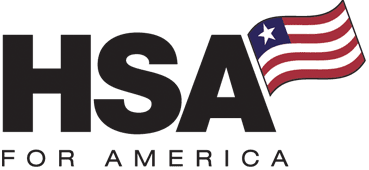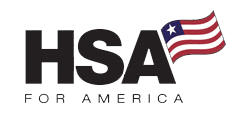
How to Design an Effective Employee Benefits Program
For 77% of employees, benefits rank as a key factor in job satisfaction, often outweighing even a comparable boost in salary. That’s how much the right perks matter.
If you are a small business owner, senior manager, or HR professional for a team of fewer than 50 employees, this guide is for you.
Whether you are looking to attract top talent, retain your best workers, or simply improve engagement, a thoughtfully designed benefits package can make all the difference.
Let’s explore how to create a program that goes beyond the basics to boost satisfaction, loyalty, and profitability.
Compare Pricing on the Best Insurance Plans Available
Know Your Employee Benefits Program Demographics
Understanding your workforce demographics is crucial when designing an employee benefits program, as different groups may have varying needs and preferences.
Here are specific considerations and examples for each demographic factor:
Age
Employees at different life stages have different priorities, and your benefits package should reflect that.
Younger workers often value career development opportunities and help with student loans, while older employees tend to focus on retirement planning and health care benefits.
- Example: A generous 401K match might not mean much to a recent graduate who’s struggling to pay off student loans. But offering student loan repayment assistance alongside a 401K match can make a big difference. It shows that you understand their needs and care about supporting them now and in the future—keeping your benefits package both relevant and competitive.
Life Stages
Understanding the different life stages of your employees allows you to create a benefits package that resonates with their unique needs.
Start by identifying the workers you want to attract and retain. These could include younger employees starting their careers or mid-career professionals with families. You might also focus on experienced workers with specialized skills or senior management leaders—or a mix of these groups.
To design a well-rounded package, consider creating a simple “matrix” or table. Outline the key groups within your workforce, their priorities, and the types of benefits that will make the biggest impact.
This approach addresses the needs of your team and strengthens the bond between employer and employee.
Example Employee Benefits Program Demographics
Other Factors for Designing a Employee Benefits Program Package
Family Status
Single Employees
Single employees often focus on benefits that improve their personal and financial well-being. Perks like gym memberships, mental health support, and competitive salaries can be particularly appealing to this group.
- Example: A wellness program offering gym membership discounts or onsite fitness classes can be a great way to support their lifestyle and show you care about their overall well-being.
Employees with Families
Employees with families often value benefits that support their health and security. These include family health insurance, life insurance, and educational support for children.
- Example: Providing a health insurance plan with robust dependent coverage can make a big difference for employees with families, helping them feel supported and secure.
While benefits must remain equitable and inclusive, understanding and addressing gender-specific health and wellness needs can make your offerings more impactful.
Tailoring certain benefits to meet these needs demonstrates a commitment to fostering a supportive and balanced workplace.
- Example: Offering both maternity and paternity leave, along with access to affordable or on-site daycare, supports employees navigating parenthood and promotes gender equity in the workplace.
Cultural and Ethical Values
Employees from diverse cultural backgrounds appreciate policies and benefits that acknowledge and respect their traditions, values, and unique needs.
A truly inclusive workplace fosters belonging and ensures everyone feels seen and supported.
Examples:
- Offering a flexible holiday policy that allows employees to substitute public holidays for those aligning with their cultural or religious practices.
- Providing diversity and inclusion training to promote understanding and respect among team members.
Taking steps to build an inclusive benefits package and workplace culture shows employees that your organization values their individuality. This approach can strengthen engagement and loyalty.
Socioeconomic Background
Employees from diverse socioeconomic backgrounds face unique financial priorities and challenges.
Tailoring your benefits to address these differences can create a more supportive and equitable workplace, ensuring every employee feels valued and empowered to succeed.
Examples:
- Financial Wellness Programs: Offer workshops and resources on budgeting, saving, and managing debt to help employees build financial stability.
- Affordable Insurance Options: Include low-cost health, dental, and vision insurance plans that accommodate employees with limited financial flexibility.
- Tuition Assistance and Skill Development: Provide financial support for education or training to help employees improve their earning potential.
Recognizing and addressing these challenges boosts employee morale and loyalty. It also fosters a workplace culture focused on inclusivity and fairness.
Technology and Benefits Accessibility
How familiar employees are with technology affects their ability to access and use their benefits.
A well-designed benefits package accommodates different levels of technological proficiency, ensuring accessibility for all while offering advanced tools for those who prefer digital solutions.
A well-designed benefits package takes into account varying levels of technological proficiency, ensuring inclusivity while leveraging digital tools for those who embrace them.
Examples:
- For Tech-Savvy Employees: Provide digital health tools, telemedicine services, and online learning platforms. These options save time and offer convenience for those who prefer technology-driven solutions.
- Technology Training Programs: Offer basic tech workshops to help employees feel confident using digital platforms. This ensures everyone can fully access and utilize their benefits.
Address the Healthcare “Affordability Gap”
Your workers probably won’t tell you this, but many of them are skipping the medical care and medications they need to stay healthy.
The reason? Cost.
Deductibles, co-pays, and co-insurance costs add up fast. Especially for workers with health issues or who have young children who need to see a doctor frequently.
They can’t afford the deductible or the out-of-pocket costs. These include co-pays, co-insurance, medications, and other expenses not covered by your current health plan.
Sometimes, they can’t afford to take time off work to visit a medical clinic. Taking a bus and waiting for hours, which is common in lower-cost networks and Medicaid clinics, can be challenging for young families and low-income workers.
Too many employer health plans are designed by senior and white-collar managers. They often overlook how high deductibles and copays impact rank-and-file workers, part-timers, and low-wage employees with families.
As a result workers wind up skipping needed preventative care and chronic disease management visits. And they put off filling prescriptions because they can’t afford to pay for their medications.
How An Employee Benefits Program Can Prevent Crippling Absenteeism
Small health problems eventually compound into larger ones.
This leads to absenteeism, presenteeism, and higher health insurance utilization.
This leads to lower productivity, higher insurance premiums, and lower profitability.
Sometimes a fairly common illness or injury can be devastating to a lower-income household, or a young family.
For example, recent studies show that most American households would have trouble meeting a $1,000 unexpected expense.
But according to the U.S. Department of Health, a broken leg from a child’s bicycle accident can easily cost over $7,500 out-of-pocket.
An unexpected bill like that could be crippling for some workers.
A good benefits package will include solutions to help all kinds of workers actually get the healthcare they need when they need it. Even your lower-wage, unskilled, and entry-level workers.
Think Beyond Major Medical
A traditional group medical plan by itself frequently does not serve some workers well.
High deductibles, coinsurance costs, co-pays, and narrow care networks make it tough for some workers to access benefits.
They are there on paper but many workers can’t take advantage of them.
As a result, employers pay a significant cost in terms of lower employee engagement.
Higher stress levels, absenteeism, presenteeism, and accidents result in employee injuries, workers compensation costs, and employee turnover.
For these reasons, smart employers often supplement group medical plans with additional benefits. These benefits help bridge the healthcare affordability gap. They also ensure workers and their families can see a doctor when needed.
Here are three great benefits that help workers afford the health care they need so they can stop skipping needed care:
- Direct primary care memberships. Employees and/or employers pay an affordable, set monthly fee to a primary care doctor’s practice. In return, the worker and his or her family members receive as many appointments or primary care services as they need, at no additional cost. Read more about Direct Primary Care here.
- Hospital/accident insurance. This benefit pays a set cash amount in the event the worker or a family member is admitted to a hospital or has a qualifying accident or injury. This cash benefit can be used to cover a deductible, compensate for lost wages from time off work, or anything else the worker needs.
- Critical illness insurance. Pays a one-time lump sum if the employee or covered family member is diagnosed with a qualifying illness. These may include cancer, heart attacks, strokes, amyotrophic lateral sclerosis, multiple sclerosis, loss of limb, or eyesight.
Take Care of Disabled Employees
Disabling illnesses or injuries can create significant financial challenges, with 95% of these cases not covered by worker’s compensation insurance.
Offering disability insurance helps protect your employees’ income, ensuring they can maintain financial stability while focusing on recovery.
Disability insurance provides an ongoing cash benefit. This is typically 50% to 65% of an employee’s income if they are unable to work due to illness or injury. This support can help cover essential expenses, such as rent, groceries, and health insurance premiums, during a difficult time.
However, it’s important to consider the tax implications of employer-sponsored disability insurance. If you, as the employer, contribute to the premiums, the portion of benefits corresponding to your contribution becomes taxable income for the employee.
Example: If you cover 75% of the disability insurance premium and the employee pays the remaining 25%, 75% of any benefits received will be taxable income for the employee. The remaining 25% will be tax-free.
By offering disability insurance, you provide employees with financial security and peace of mind, demonstrating your commitment to their well-being during life’s unexpected challenges.
Using Section 125 Cafeteria Plans and Section 105 Plans
You can offer each of these benefits as part of a Section 125 Cafeteria plan.
This allows workers to pay for these benefits with tax-free dollars, at little or no cost to you.
Or you can help pay for these benefits, or pay for them entirely in a Section 105 plan.
10 “Must-Have” Employee Benefits You Need to Attract and Retain Talent in 2025
Health Sharing Plans, HSAs, and HRAs
Incorporating Health Sharing Plans, Health Savings Accounts (HSAs), and Health Reimbursement Arrangements (HRAs) can improve your benefits program.
These options offer flexibility and address diverse employee needs.
Health Sharing Plans
These cooperative healthcare arrangements are often more affordable than traditional insurance.
They are not health insurance plans. They are non-profit associations of health-minded people who share common values, and pledge to help share the medical expenses of their fellow members.
For some small employers, these options can protect employees from unexpected high medical costs. They may cost up to 50% less than traditional health insurance plans.
However, health sharing plans generally impose waiting periods before they will share the costs of pre-existing conditions. For this reason, they may not be suitable for all employees and family members.
Health sharing is ideal for younger, healthier workforces. For employees with pre-existing conditions, consider helping them purchase a traditional health insurance policy through the ACA Marketplace. A health-sharing program can then be offered to the rest of the team.
For expert assistance in designing a health sharing or a hybrid health sharing/health insurance benefits package, make an appointment for a consultation with an HSA for America Personal Benefits Manager.
Health Savings Accounts (HSAs)
Available to employees enrolled in high-deductible health plans, HSAs offer tremendous tax benefits for employees.
Unlike flexible spending arrangements (FSAs), health savings accounts don’t have a “use-it-or-lose-it” provision. They roll over year to year, and continue to compound tax deferred for as long as the assets remain in the HSA.
If the employee or family member needs medical care, or has a qualifying medical expense, he or she can use the HSA to pay for it, tax-free.
As of 2025, Health Savings Account (HSA) contribution limits have increased to $4,300 for individuals with self-only coverage and $8,550 for those with family coverage. Individuals aged 55 and older can contribute an additional $1,000 as a catch-up contribution.
This benefit helps rank-and-file and middle-management workers address the healthcare affordability gap. It also keeps insurance premiums low with the HDHP.
Health Reimbursement Arrangements (HRAs)
These employer-funded accounts reimburse employees for qualified medical expenses, including premiums for health insurance.
HRA contributions are tax-free to the employer, generally tax-free to workers, and give workers the maximum flexibility to choose their own health insurance plan.
Everything You Need to Know About HRAS For Small Businesses (2025 Edition)
Work-Life Balance Considerations
Organizations such as Towers Watson and the Society for Human Resource.
Management consistently finds that workers value benefits that focus on work-life balance issues according to recent studies.
Example: Work that can be done from home on their computers instead of coming into the office. Use this feature of the job to attract potential employees, along with PTO policies that can cater to a broad range of work-life balance needs.
Other popular and in-demand work-life balance employee benefits examples include:
- Pet-friendly office policies (but be cognizant of employees with allergies, and their rights under the Americans With Disabilities Act
- Sabbaticals
- Unlimited vacation days
- Job sharing
- Remote working
- Child-friendly workplaces
- Fitness and recreational activities
- Gym memberships
- Meditation and nap rooms
- Eldercare support
Emphasize Employee Benefits Program Communication
Benefits communication shouldn’t be an afterthought.
Once you have made the capital investment in providing a competitive employee benefits package, it’s important to communicate the benefits effectively to your workforce.
This helps to build perceived value and appreciation and fosters loyalty, engagement, and retention.
It also encourages employees to refer their friends and family to your company as a great place to work. This gives you a huge leg up in the fight to recruit the best talent who are also a “best fit” for your company culture and values.
- Transparent communication. Clearly and effectively communicate any changes or additions to the benefits package to all employees, highlighting how they address the feedback collected.
- Communicate in multiple media. Handing out insurance company brochures and calling it a day isn’t enough. Continue to communicate via newsletters, paycheck stuffers, training sessions, lunch-and-learns, posters, emails, your website, and more.
- Engage management at all levels. HR shouldn’t be doing this alone. Your middle management team should also be involved in communicating the value of these benefits, and helping workers understand how these programs work.
- Communicate year-round. Good employee benefits communication isn’t just something you do during open enrollment and onboarding and then forget about it. It’s something you should be doing all year long.
- Feedback channels. Establish channels for ongoing feedback to ensure the new benefits continue to meet employee needs and expectations.
Read more on Best Practice for Communicating Employee Benefits
Voluntary Employee Benefits Programs
Voluntary benefits allow employees to select from a range of pre-tax benefit options tailored to their individual needs.
These benefits are designed to be affordable for a broad swathe of employees. And they cost little or nothing to you as the employer, unless you choose to pay premiums or other costs on employees’ behalf.
By setting up a cafeteria plan you empower workers to decide what benefits work best for them. And you also reduce your payroll costs, because Section 125 benefits are exempt from payroll taxes.
Voluntary Employee Benefits Program Examples
Voluntary benefits, often part of Section 125 plans, allow employees to customize their benefits package. Here are the most common examples:
- Health Insurance Premiums: Employees can pay their portion of health insurance premiums pre-tax, lowering taxable income.
- Flexible Spending Accounts (FSAs).
- Healthcare FSAs: Cover out-of-pocket medical, dental, and vision expenses.
- Dependent Care FSAs: Cover childcare or eldercare while working.
Note: FSAs have a “use-it-or-lose-it” rule, unlike HSAs.
- Health Savings Accounts (HSAs): Paired with high-deductible plans, HSAs let employees save pre-tax dollars for future medical costs.
- Dental Insurance: Coverage for preventative care, fillings, crowns, and sometimes orthodontics.
- Vision Insurance: Benefits for exams, eyewear, and contact lenses.
- Life Insurance: Employees can purchase additional coverage for themselves and dependents.
- Disability Insurance.
- Short-Term: Replaces income for brief illnesses or injuries.
- Long-Term: Provides income during extended disabilities.
- Accident, Critical Illness, and Hospital Indemnity Insurance: Benefits for injuries, critical diagnoses like cancer, or hospital admissions.
- Legal Services: Assistance with estate planning, family law, and identity theft protection.
- Pet Insurance: Coverage for pet medical care.
- Identity Theft Protection: Services to monitor and protect personal information and assist in recovery if identity theft occurs.
- Employee Assistance Programs (EAPs): Counseling for personal or work-related issues.
- Commuter Benefits: Pre-tax funds for public transit and parking costs.
- Wellness Programs: Incentives for healthy living, like gym memberships or smoking cessation.
- Tuition Reimbursement/Assistance: Financial assistance for education-related expenses to encourage professional development.
- Retirement Savings Plans (401(k), 403(b)): Pre-tax contributions to retirement funds.
Offering diverse voluntary benefits helps employees meet personal and family needs.
LEARN MORE! The Small Business Owner’s Guide to Starting a Section 125 Cafeteria Plan
Leverage Employee Benefits Program Administration Technology
It used to be that open enrollment required a major HR effort, as employees had to be coached and enrolled in every benefit manually.
Those days are over. In today’s environment, nearly all benefits vendors provide self-enrollment support over the Internet, or via convenient cell-phone apps.
If your vendor or vendors haven’t kept up with the times, it may be time to explore some other options.
The same goes for your current management team. If you’re not already using paperless technology and using the latest technology tools to run your HR operations, it’s time to make some changes.
Technology reduces error rates, lowers compliance risks, improves the employee experience, and lightens the load on your administrative teams.
So they can go back to doing what they do best, support workers and management and recruit and retain great employees.
Foster a Culture of Health and Wellness
Develop a culture that prioritizes fitness and a health-conscious lifestyle.
This can include gym memberships, wellness challenges, healthy workplace snacks, and resources for mental and physical health.
Such initiatives demonstrate a commitment to the overall well-being of your employees.
A successful health and wellness culture can help reduce absenteeism, presenteeism, and healthcare utilization costs over the long term, boosting profitability.
Compare Pricing on the Best HealthShare Plans Available
An Effective Employee Benefits Program That Drives Success
Gathering and acting on employee feedback is essential for creating a benefits program that truly meets the needs of your workforce.
Regularly assess employee satisfaction with the benefits you offer and use their input to make thoughtful adjustments.
A well-rounded employee benefits program goes beyond immediate perks. It should include innovative options like Health Sharing, HSAs, and HRAs, alongside family-friendly perks like daycare assistance.
By addressing current needs and anticipating future trends, you create a workplace environment that attracts top talent, fosters employee satisfaction, and builds loyalty.
Ultimately, your benefits program reflects your commitment to your employees and embodies the values and vision of your company.
By investing in their well-being, you’re investing in the success of your organization. Need help getting started? Contact one of our Benefits Managers to help you craft a plan tailored to your team’s needs.
For Further Reading:
- Best Practice for Communicating Employee Benefits
- 10 “Must-Have” Employee Benefits You Need To Attract and Retain Top Talent in 2026
- How to Beat the High Cost of Employee Stress
- Employee Education: Empowering Your Team to Make Informed Healthcare Decisions
- How to Budget for Employee Benefits: A Guide for Business Owners
Read More About Group Health Insurance Options in Your State



